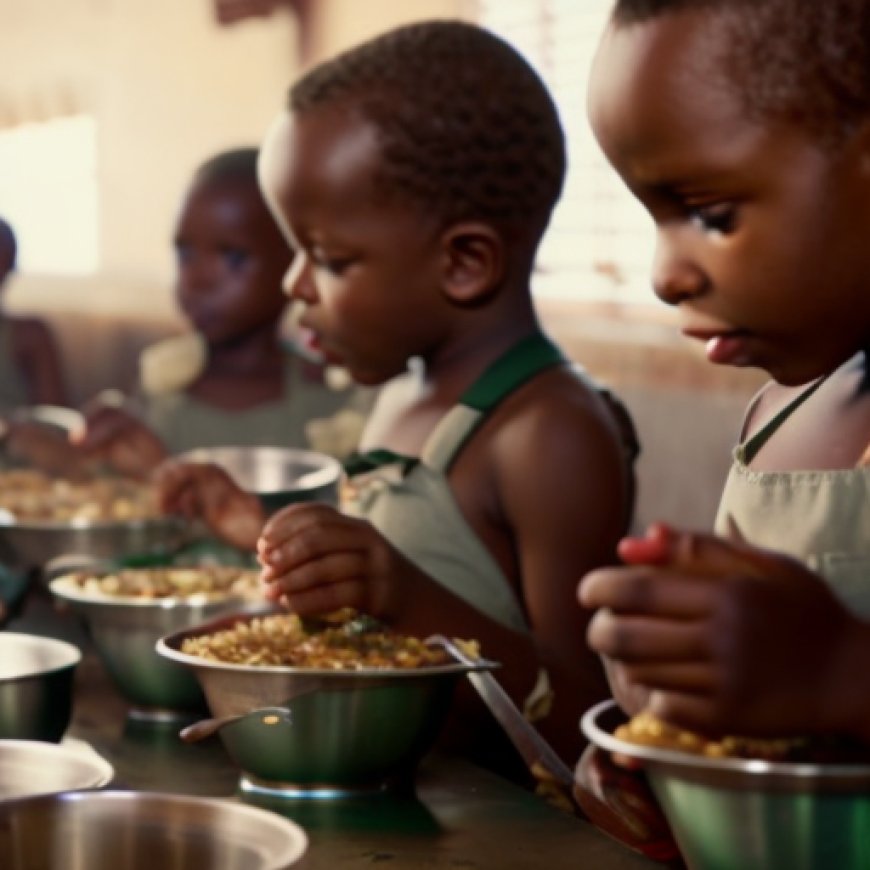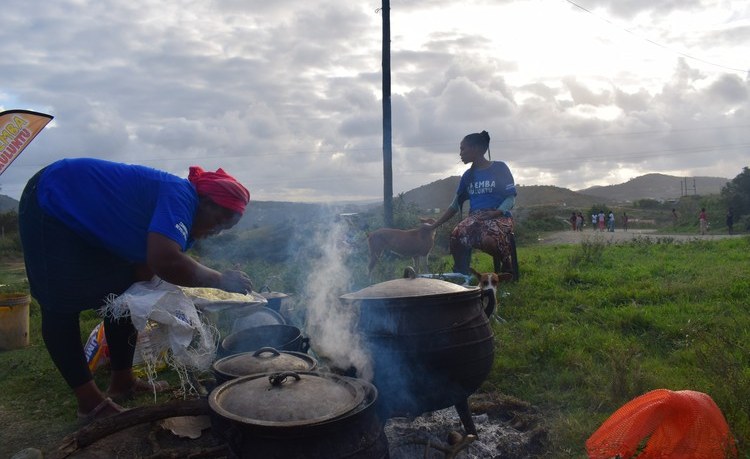South Africa: Soup Kitchen Serves Eastern Cape Children the Only Meal They’ll Eat That Day
South Africa: Soup Kitchen Serves Eastern Cape Children the Only Meal They'll Eat That Day AllAfrica - Top Africa News


The Human Rights Commission Recommends Declaring Child Malnutrition in the Eastern Cape a Disaster

It’s about 3pm in Cwebeni, a small village near Port St Johns in the Eastern Cape, and children and their mothers are lining up for what might be their only meal of the day.
Over a wood fire, four massive cast iron pots are filled to the brim with umngqusho (samp and beans), vegetables, and rice. The children are served first while their mothers wait their turn on the grass.
iThemba Kuluntu: Tackling Poverty, Unemployment, and Government Neglect
The community-run soup kitchen is supported by a new organization called iThemba Kuluntu. The organization aims to tackle the hardships caused by poverty, unemployment, and government neglect across six villages in the area.
In Cwebeni alone, they serve between 400 and 500 meals a day, according to one of iThemba Khuluntu’s founders, TJ Hanneman. A handful of women volunteer their time to cook about four times a week.
Addressing Food Insecurity
Hanneman says local shop owners in Port St Johns donate some food, and food security organizations such as SA Harvest have recently come on board.
The Impact of Food Assistance
After the food was served, about 40 food parcels were distributed to families.
“This food plays a big role for our children because some of them go to sleep at night without food in their stomachs,” says volunteer Nomsa Mtholi, a 31-year-old unemployed mother of three. Hers is among the many families in the village who survive on a child support grant of R530 a month: according to Nosalathiso Petshana, a director of iThemba Khuluntu, very few people in Cwebeni have income outside of social grants.
The Challenges of Unemployment and Neglected Services
With little prospect of finding employment, life in Cwebeni is very hard. Villagers complain about a lack of basic services. They say they have been forgotten by the authorities.
Human Rights Commission’s Findings and Recommendations
In March, the SA Human Rights Commission (SAHRC) visited the village following “distressing complaints” of human rights violations in the area. Among the complaints reported was severe malnutrition and starvation.
Ntombizoxolo Gqetywa lives with 17 relatives who all survive on four child support grants. Towards the end of the month, the family struggles to feed everyone. “Sometimes all we are left with is mielies. Sometimes nothing, just salt and oil,” Gqetywa told GroundUp.
In November, the SAHRC published an alarming report on child malnutrition in the Eastern Cape, which it said should be declared a state of disaster in terms of the Disaster Management Act. The SAHRC also called for the national and provincial governments to be compelled to intervene immediately, and for the child support grant to be increased above the food poverty line, currently at about R1,058 a month.
SDGs, Targets, and Indicators
| SDGs | Targets | Indicators |
|---|---|---|
| SDG 2: Zero Hunger | 2.1 By 2030, end hunger and ensure access by all people, in particular, the poor and people in vulnerable situations, including infants, to safe, nutritious and sufficient food all year round | Not mentioned in the article |
| SDG 1: No Poverty | 1.2 By 2030, reduce at least by half the proportion of men, women, and children of all ages living in poverty in all its dimensions according to national definitions | Not mentioned in the article |
| SDG 3: Good Health and Well-being | 3.4 By 2030, reduce by one-third premature mortality from non-communicable diseases through prevention and treatment and promote mental health and well-being | Not mentioned in the article |
| SDG 10: Reduced Inequalities | 10.2 By 2030, empower and promote the social, economic and political inclusion of all, irrespective of age, sex, disability, race, ethnicity, origin, religion or economic or other status | Not mentioned in the article |
| SDG 16: Peace, Justice, and Strong Institutions | 16.3 Promote the rule of law at the national and international levels and ensure equal access to justice for all | Not mentioned in the article |
1. Which SDGs are addressed or connected to the issues highlighted in the article?
- SDG 2: Zero Hunger
- SDG 1: No Poverty
The issues highlighted in the article are child malnutrition, poverty, and food insecurity. These issues are directly connected to SDG 2, which aims to end hunger and ensure access to safe and nutritious food for all people, particularly those in vulnerable situations. Additionally, the article mentions that families in the village survive on child support grants, indicating a high level of poverty, which aligns with SDG 1 to reduce poverty in all its dimensions.
2. What specific targets under those SDGs can be identified based on the article’s content?
- Target 2.1: By 2030, end hunger and ensure access by all people, in particular, the poor and people in vulnerable situations, including infants, to safe, nutritious and sufficient food all year round.
- Target 1.2: By 2030, reduce at least by half the proportion of men, women, and children of all ages living in poverty in all its dimensions according to national definitions.
Based on the content of the article, the specific targets that can be identified are Target 2.1 under SDG 2, which focuses on ending hunger and ensuring access to safe and nutritious food for all people, particularly those in vulnerable situations. Additionally, Target 1.2 under SDG 1 is relevant, as it aims to reduce the proportion of people living in poverty, including children.
3. Are there any indicators mentioned or implied in the article that can be used to measure progress towards the identified targets?
No, the article does not mention or imply any specific indicators that can be used to measure progress towards the identified targets.
Copyright: Dive into this article, curated with care by SDG Investors Inc. Our advanced AI technology searches through vast amounts of data to spotlight how we are all moving forward with the Sustainable Development Goals. While we own the rights to this content, we invite you to share it to help spread knowledge and spark action on the SDGs.
Fuente: allafrica.com

Join us, as fellow seekers of change, on a transformative journey at https://sdgtalks.ai/welcome, where you can become a member and actively contribute to shaping a brighter future.







